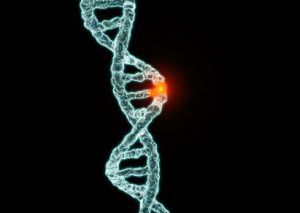
In a study appearing in the October 11 issue of JAMA, Ali Torkamani, Ph.D., of Scripps Translational Science Institute, La Jolla, Calif., and colleagues report preliminary results from a family-based, postmortem genetic testing study.
Approximately 11,000 individuals younger than 45 years in the United States die suddenly and unexpectedly each year from conditions including sudden infant death, pulmonary embolism, ruptured aortic aneurysm, and sudden cardiac death (SCD). Sometimes the cause of death is not determined, even after a clinical autopsy, leaving living relatives with an inaccurate or ambiguous family health history. Moreover, the rate of clinical autopsy has declined from approximately 50 percent fifty years ago to less than 10 percent in 2008, contributing further to uncertain family health histories. This uncertainty may be partially resolved with postmortem genetic testing ("molecular autopsy"). Initial studies, limited to cardiac channelopathy and epilepsy genes, have yielded molecular diagnoses in approximately 25 percent of cases. A more comprehensive molecular autopsy program, expanded beyond SCD, has the potential to provide more accurate family health information to a wider spectrum of afflicted families.
For this study, exome sequencing was performed on blood or tissue samples collected from deceased persons age 45 years or younger, with sudden unexpected death, referred to Scripps Translational Science Institute by the medical examiner between October 2014 and November 2015. Exome sequencing of saliva samples from parents, when available, was also performed. Mutations were categorized as likely cause of death (mutation previously reported or expected in an SCD-related gene); plausible cause of death (mutation of unknown significance in an SCD gene); or speculative cause of death (mutation previously reported in other disorders).
Twenty-five cases were sequenced, with 9 including both parents of the deceased. Clinical autopsies discovered the likely cause of death in 5 cases. A likely cause of death was identified by molecular autopsy in 4 cases (16 percent), a plausible cause in 6 (24 percent), and a speculative cause in 7 (28 percent); no mutations were identified in 8 (32 percent). The likely genetic cause of death was corroborated with clinical autopsy findings in 2 of 5 cases. All other clinical autopsy findings (3 cases) could be linked to a plausible or speculative genetic cause. Seventy percent (7/10 cases) of likely and plausible pathogenic mutations were inherited from relatives who did not die suddenly.
The authors note that these speculative and plausible findings cannot definitively be linked to sudden death.
"The ambiguity associated with some of these genetic findings should be balanced against the potential for clinical follow-up, active surveillance, or preventive interventions in living relatives. Although molecular autopsies may help identify genetic causes of sudden unexpected death, a comprehensive and systematic effort to collect and share genetic and phenotypic data is needed to more precisely define pathogenic variants and provide quantifiable risks to living relatives."
Read article here.
SOURCE: JAMA
